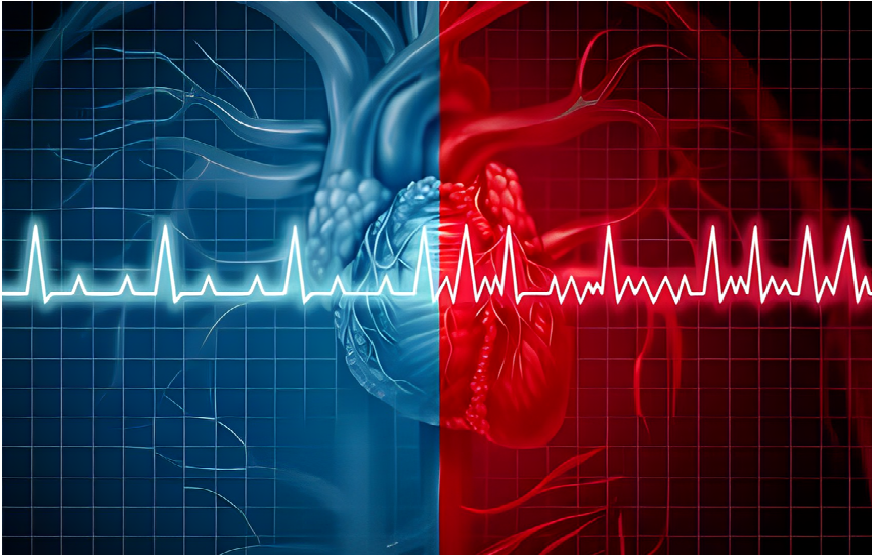In the intricate symphony of human physiology, the heart orchestrates one of the most vital rhythms – the heartbeat. Each beat and heart resting rate represents the culmination of complex electrical impulses and muscular contractions, signifying the continuous circulation of life-giving blood throughout the body. But amidst the marvels of the human heart lies the crucial question: What constitutes a normal pulse rate, and when does it veer into the territory of danger?
Understanding the nuances of heart rates is fundamental, especially for those concerned about their cardiovascular health. A normal pulse rate serves as a beacon of well-being, while deviations might herald underlying cardiac disease. In this discourse, we unravel the mysteries behind heart rates, exploring the realms of normalcy and danger.
If you are looking for the best cardiac services in Delhi-NCR and Gurgaon, visiting a top hospital in Gurgaon might be the best bet that is present in this day and age. Keeping our hearts in the best working order is something that we must prioritize over all else, and this is a measure that would certainly yield the best results there are.
Normal Resting Heart Rate:
At the core of heart rate assessment lies the concept of resting heart rate – the number of heart beats per minute when the body is at complete rest. A normal resting heart rate serves as a reliable indicator of cardiovascular fitness and overall health. For adults, the average resting heart rate typically ranges between 60 to 100 beats per minute. Factors such as age, fitness level, and underlying medical conditions can influence this range.
Monitoring one’s heart resting rate provides valuable insights into cardiac function and fitness levels. Regular assessment enables individuals to gauge their cardiovascular health and track changes over time. Techniques such as palpation of the pulse at the wrist or neck, or utilizing wearable fitness trackers, offer convenient means to measure resting heart rates accurately.
Distinguishing Normal from Dangerous:
While a normal resting heart rate signifies equilibrium within the cardiovascular system, deviations from this baseline warrant attention. A heart resting rate persistently below 60 beats per minute (bradycardia) or above 100 beats per minute (tachycardia) may indicate underlying cardiac abnormalities or systemic disturbances.
Bradycardia, characterized by an abnormally slow heart rate, can stem from various causes, including intrinsic cardiac disorders, electrolyte imbalances, or medication side effects. Conversely, tachycardia, marked by rapid heart rhythms, may arise due to factors such as stress, physical exertion, dehydration, or cardiac arrhythmias.
Once any such symptoms have been identified, visiting a good hospital in Gurugram to get the proper diagnosis and cure executed is something that must be focused on. They have state-of-the-art medical equipment and teams of medical professionals who can address the issues in the best possible manner.
Recognizing the Red Flags:
Amidst the spectrum of heart rates, certain benchmarks signal potential danger and necessitate prompt medical evaluation. For instance, a resting heart rate persistently exceeding 100 beats per minute, especially in the absence of exertion or physiological stress, warrants attention. Such elevated heart rates may herald conditions like atrial fibrillation, heart failure, or thyroid dysfunction, necessitating specialized cardiac assessment. A hospital in Gurgaon would be best placed to execute such diagnostic and curative procedures.
Conversely, a resting heart rate plummeting below 60 beats per minute, particularly accompanied by symptoms such as dizziness, fainting, or shortness of breath, mandates urgent medical attention. Bradycardia, if left unchecked, can precipitate life-threatening complications, including cardiac arrest or cerebral hypoperfusion.
Navigating the Pathways to Wellness:
In the pursuit of optimal cardiovascular health, vigilance and proactive measures play pivotal roles. Regular monitoring of resting heart rates empowers individuals to discern subtle changes and seek timely medical intervention when necessary. Lifestyle modifications, including regular exercise, balanced nutrition, stress management, and adequate hydration, foster cardiovascular resilience and mitigate the risk of cardiac disease.
Furthermore, fostering open dialogue with healthcare providers fosters a collaborative approach towards heart health. Routine screenings, comprehensive evaluations, and tailored interventions enable early detection and management of cardiac abnormalities, fostering holistic well-being.
Empowering Hearts, Ensuring Health:
As the epicentre of vitality, the heart merits meticulous attention and care. Understanding the nuances of heart rates equips individuals with the knowledge to navigate the labyrinth of cardiac health effectively. From deciphering the rhythms of normalcy to deciphering the red flags of danger, proactive engagement fosters a culture of wellness and resilience.
Conclusion
A normal resting heart rate epitomizes the equilibrium within the cardiovascular system, whereas deviations may herald underlying cardiac pathology. By embracing proactive measures, fostering open dialogue with healthcare providers, and prioritizing holistic well-being, individuals embark on a transformative journey towards heart health. Amidst the cadence of life, let the heartbeat resonate with vitality and vigour, guiding us towards a future imbued with health and vitality.
Want to stay at the top of your heart health? Visit a super-speciality hospital in Gurgaon today.




